Suborder Theropoda Phylum Chordata | Class Reptilia Rank Genus | |
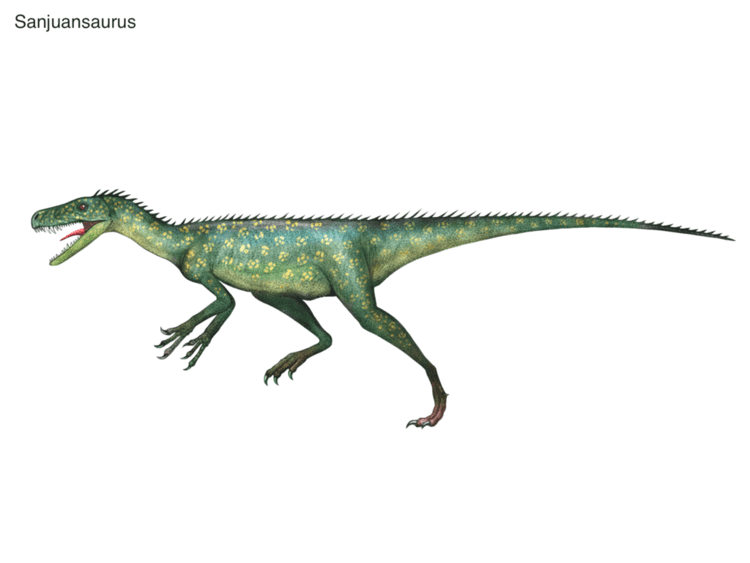 | ||
Similar Chromogisaurus, Jaklapallisaurus, Nambalia, Plateosauravus, Adeopapposaurus | ||
Sanjuansaurus ("San Juan Province lizard") is a genus of herrerasaurid dinosaur from the Late Triassic-age Ischigualasto Formation of northwestern Argentina.
Contents
- Description and classification
- Distinguishing anatomical features
- Discovery
- Provenance and occurrence
- Fauna and habitat
- References
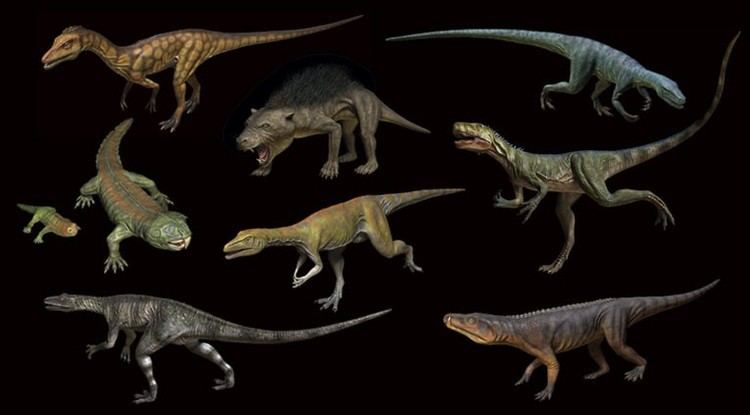
Description and classification

Sanjuansaurus was comparable in size to a medium-sized Herrerasaurus, with a thigh bone that was 395 millimetres (15.6 in) long and a tibia that is 260 millimetres (10 in) in length. Alcober and Martinez performed a phylogenetic analysis and found Sanjuansaurus to be a herrerasaurid. It was determined that Sanjuansaurus and Herrerasaurus share many similarities in the morphology of the skull, neck vertebrae, back vertebrae, hip vertebrae, scapula, and the hip bones. Alcober and Martinez observed that Sanjuansaurus and Staurikosaurus share many similarities in the morphology of the hip bones, and the tibia. The pubis of Sanjuansaurus, unlike in other herrerasaurids, points toward the cranium.
Distinguishing anatomical features
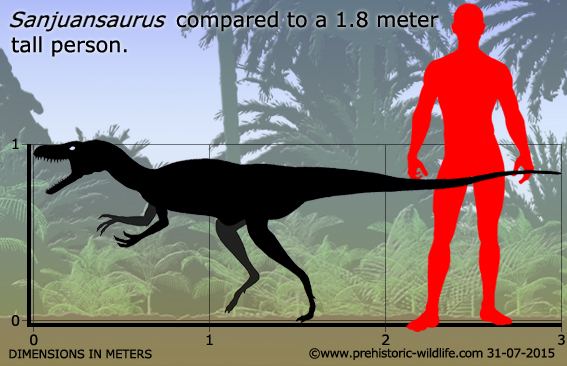
A diagnosis is a statement of the anatomical features of an organism (or group) that collectively distinguish it from all other organisms. Some, but not all, of the features in a diagnosis are also autapomorphies. An autapomorphy is a distinctive anatomical feature that is unique to a given organism or group.
According to Alcober and Martinez (2010), Sanjuansaurus can be distinguished based on the following characteristics:
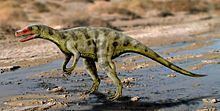
Discovery

Sanjuansaurus was named and described in 2010 by Oscar Alcober and Ricardo Martinez. The type species was named S. gordilloi after Raul Gordillo, the head fossil preparator and artist of the San Juan Museum. It is known from and based on an associated and partially articulated partial skeleton (PVSJ 605) consisting of a jaw fragment, most of the vertebral column from the axis to the anterior tail, the shoulder blades, an ulna, part of the pelvis, most of the long bones of the legs, and a few other bones.
Provenance and occurrence
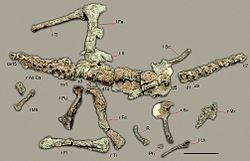
Sanjuansaurus holotype specimen PVSJ 605 was discovered in 1994, in gray-green sandstone of the Cancha de Bocas Member near the base of the Ischigualasto Formation, in Ischigualasto Provincial Park in San Juan, Argentina. This horizon dates to approximately 231.4 Ma, during the late Carnian Stage of the Late Triassic.
Fauna and habitat
In the Ischigualasto Formation, dinosaurs constituted only about 6% of the total number of fossils, but by the end of the Triassic Period, dinosaurs were becoming the dominant large land animals, and the other archosaurs and synapsids declined in variety and number.
Studies suggest that the paleoenvironment of the Ischigualasto Formation was a volcanically active floodplain covered by forests and subject to strong seasonal rainfalls. The climate was moist and warm, though subject to seasonal variations. Vegetation consisted of ferns (Cladophlebis), horsetails, and giant conifers (Protojuniperoxylon). These plants formed highland forests along the banks of rivers. Sanjuansaurus lived in the jungles of Late Triassic South America alongside early dinosaurs, Eoraptor, Herrerasaurus, Chromogisaurus, and Panphagia, as well as Saurosuchus, a giant land-living rauisuchian (a quadrupedal meat eater with a theropod-like skull); the broadly similar but smaller Venaticosuchus, an ornithosuchid; and the predatory chiniquodontids. Herbivores were much more abundant than carnivores and were represented by rhynchosaurs such as Hyperodapedon (a beaked reptile); aetosaurs (spiny armored reptiles); kannemeyeriid dicynodonts (stocky, front-heavy beaked quadrupedal animals) such as Ischigualastia; and therapsid traversodontids (somewhat similar in overall form to dicynodonts, but lacking beaks) such as Exaeretodon. These non-dinosaurian herbivores were much more abundant than early ornithischian dinosaurs like Pisanosaurus.
